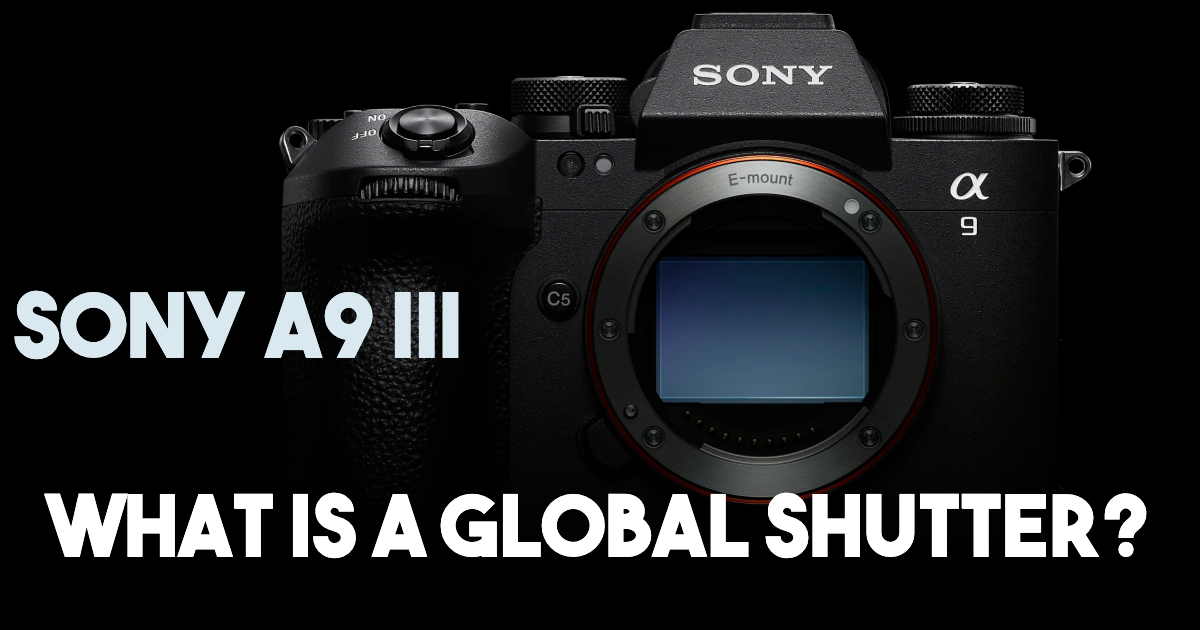November 15, 2023
What is a Global Shutter?
Sony’s new Alpha 9 III launch has introduced some new vocabulary to the photography lexicon, the Global Shutter. What is it?

Last week Sony launched their latest camera. It’s not the range’s flagship; that moniker belongs to the Sony A1 with its 50-megapixel sensor. The Sony Alpha 9 III has a 24-megapixel sensor, which is pretty typical for today’s mirrorless cameras. However, the Sony A9 III has been lauded as a ground-breaking camera thanks to the first example of a global shutter system being launched. I have to admit that it didn’t mean much to me until I realised what Sony had actually done. So, what is a Global Shutter?
What did we have before Global Shutter?
Before we look at what a global shutter is, it’s worth trying to understand how the current shutter systems work on a digital camera. When we press the shutter on our cameras, the processor gathers the image using what is known as a rolling shutter. Many 24 mega-pixel cameras, like the Sony A9 III, have a sensor 6000 pixels wide by 4000 pixels high. The rolling shutter system would start gathering the information on the top row of pixels, then move to the next row, and so on. The camera does this extremely fast, and usually, the process is imperceptible to the photograph being taken. However, when the object being photographed is moving very quickly, the object has moved enough to be visible in the picture by the time the following line of data is being read.

The animation above, taken from Wikipedia, gives a great visualisation of what happens when a rolling shutter can’t keep up. The places where you’re most likely to see this issue are photographing the rotors of a helicopter, the firing of a bullet, or the movement of a golf club before striking the ball.
Rolling shutters were used as camera manufacturers could improve the sensitivity of the sensors. They could use the minuscule time for the shutter to roll to make better calculations in reducing noise.
What does a Global Shutter do?
While the Sony AIII might be the first consumer camera to launch a global shutter, it is by no means new technology. They have been used for at least a decade to manage things like adaptive cruise control or lane-changing technology in cars.
Instead of reading each line of data sequentially, the processor takes a single snapshot of every pixel simultaneously. As a result, the issues that sports photographers have historically had with rolling shutters should be a thing of the past.
The other benefit of the global shutter system is that the shutter speeds can go much faster. The flagship A1 has a fastest shutter speed of 1/32,000th of a second. By contrast, Sony states that the fastest speed on the A9 III is 1/80,000th.
Does this mean Sony is winning the mirrorless war?
I’ve been thinking for a while that Sony had lost its way as it hadn’t been delivering improvements in the same way as Canon had. The new A9 III has undoubtedly caused a stir, and when it is available to buy in six months, yes, six months from launch to availability, it should be a market leader. However, the famous saying a week is a long time in politics applies similarly to cameras. Six months is a long time away, and we know that Canon has released the expected R1 flagship camera into the wild, albeit with sticky tape hiding its real identity. 2024 is an Olympic year, which usually means launching a high-end camera from Canon. The R1 has been rumoured for years, and its delay suggests that Canon has something similar up its sleeve.
For 99.9% of people reading this, and even me writing it, the introduction of global shutters will make next to no difference. I rarely shoot things that would be affected by rolling shutter issues. The Sony A9 III will be useful for sports shooters, someone snapping hummingbirds, or other fast-moving birds.
Please give us your feedback.
If you’ve got any questions or comments, leave them below. You can sign up for the Edinburgh Photography Workshop monthly newsletter, where you’ll get regular updates on exciting things happening in photography and some great tips. Sign up by clicking here.
About the author
As well as running Edinburgh Photography Workshop, Rich Dyson is a professional photographer. His photographs are regularly used in newspapers such as The Times, Guardian and Daily Telegraph. He also had two solo exhibitions and was featured in a members-sponsored exhibition in the Scottish Parliament. You can see and buy his photography at richdysonphotography.com.